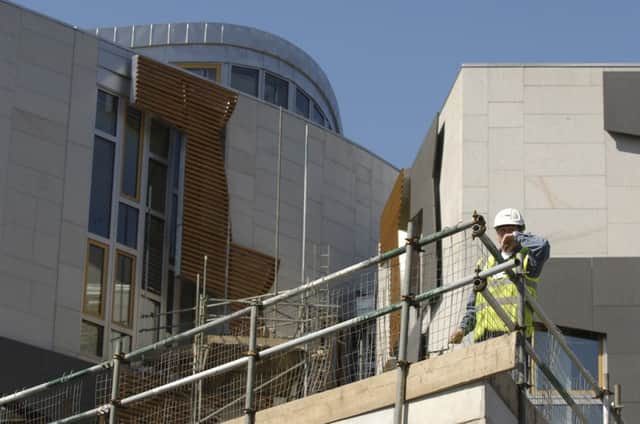‘Cheaper to tear down Scottish parliament by 2020’


Questions are being asked about the Scottish Parliament’s long-term viability after figures revealed the repair bill for the building has now topped an average of £141,000 per month.
Since its inception in 2004, taxpayers have shelled out £11 million for maintenance costs – surpassing the original estimates for actually constructing the seat of power in Edinburgh.
Advertisement
Hide AdAdvertisement
Hide AdShortly before Donald Dewar first announced “there shall be a Scottish Parliament”, a government white paper stated the project could cost as little as £10m. But building Holyrood became a scandal, with constant delays and spiralling costs.
Now there are concerns about the parliament’s lifespan following the fivefold increase in maintenance costs in a decade.
Architectural writer David Black, who penned a 2003 book about the troubled Holyrood project, said: “It undoubtedly has a host of problems which aren’t going away. Maintenance costs will inevitably increase, to a point where it would make much more economic sense to tear it down and redevelop the site, possibly around 2020.
“Water seepage into the basement is one of the problems I’ve been told about but there are plenty of others. We’ve had cladding panels move, a beam collapse in the debating chamber, and windows cracking.
“This is a problem building.”
New figures revealed under freedom of information show £11m has been spent on repairs and maintenance at Holyrood in less than a decade – £3.3m in the past two years alone. It is a fivefold increase since 2004, from £314,680 to £1.7m in 2013.
The repair bill – which does not include landscaping costs – doubled in the parliament’s first year to £727,000 and had topped £1m annually by 2007.
High-profile problems include a 12ft-long wooden roof beam that swung loose above MSPs during a debate in the chamber in 2006.
In May 2011, a granite block came loose on a wall and was left hanging above the glass roof of the MSPs’ restaurant, while last year, a skylight window crashed down four floors from the ministerial tower. Other issues include leaks, damp and blockages in the sewerage system.
Advertisement
Hide AdAdvertisement
Hide AdMr Black, who gave evidence to the Holyrood inquiry chaired by Lord Fraser in 2004, said: “A lot of hokum is spouted about the so-called sustainability of the building. But it leaks like a sieve in winter and cooks up a treat in the summer.
“For purely political, face-saving reasons, politicians would put it on life support before giving in to the humiliation of pulling it down; plus, given it is essentially a concrete bunker construction, it would be fairly costly to demolish.”
He added: “The chances are, however, that the building will be a charge on our children and probably our grandchildren in terms of ongoing cost.”
The white paper published on 2 July, 1997, stated that “the capital costs of establishing the parliament are estimated to be between £10m and £40m”.
Officials at the Scottish Parliament defended the total spend on repairs since 2004.
A spokeswoman said: “Our annual maintenance cost reflects that Holyrood is an iconic, award-wining building that welcomes more than 400,000 visitors a year. All maintenance costs are met from within the parliament’s overall budget provision, which we have reduced by 11 per cent over four years.”
Spiralling cost
Total annual spend on Holyrood maintenance:
2004-5 £314,680
2005-6 £727,136
2006-7 £764,987
2007-8 £1,065,644
2008-9 £1,334,892
2009-10 £1,627,165
2010-11 £1,792,257
2011-12 £1,676,211
2012-13 £1,696,750